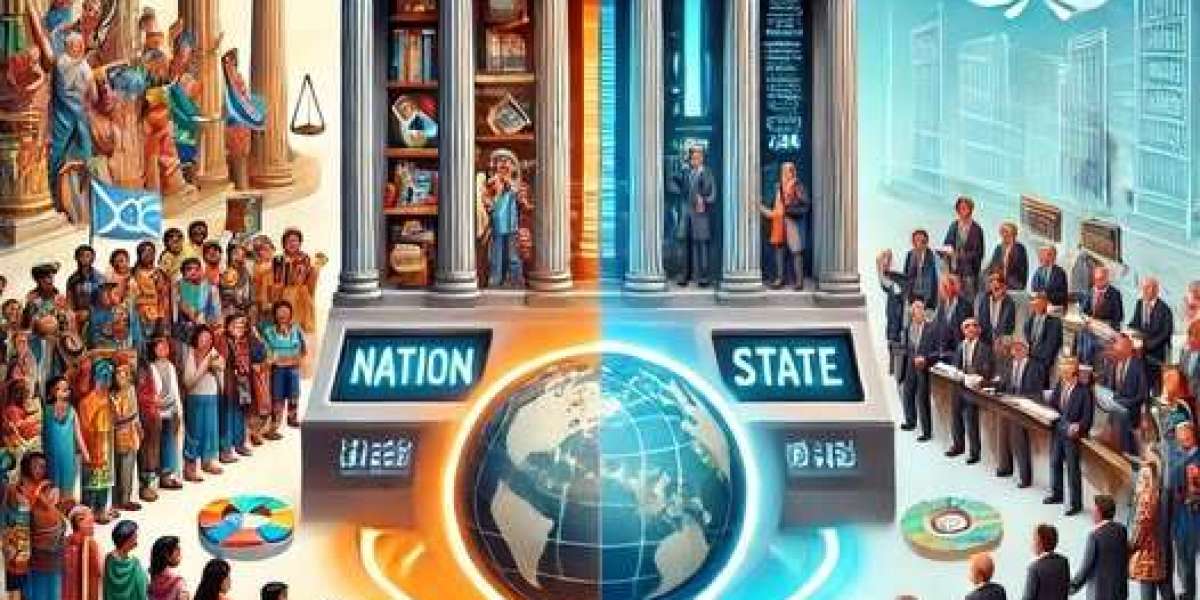I would like, through this article, to pay tribute to Kateb Yacine, to whom the idea of the Natiometer owes a great deal.
Introduction
Kateb Yacine, a prominent writer in Algerian literature, is renowned for his bold vision of history, society, and identity. His work, deeply influenced by the struggles of the Algerian people, also reflects on time, space, and collective memory. Among his major works, The Star-Polygon embodies a unique and complex conception of time, transcending the boundaries of classical narrative and inviting a broader vision of human history. This novel, resonating with the fight for independence and nation-building, offers a profound reflection on identity, memory, and the perception of time.
In this article, we will explore how the original conception of time in The Star-Polygon inspired the creation of the Natiometer, an innovative tool for measuring and diagnosing the phenomenon of "nation." We will analyze how Kateb Yacine’s reflections on time influenced the idea of the Natiometer and how this vision integrates into the dynamics and evolution of nations.
I. The Original Conception of Time in The Star-Polygon
1. Historical Time and the Experience of History
In The Star-Polygon, Kateb Yacine offers a profound reflection on time, particularly in how individuals and peoples experience history. The novel is characterized by a fragmented, shattered temporality that deconstructs the linearity of time, as typically perceived in traditional historical narratives. Here, time is not merely a succession of events; it is a space where different moments and eras intersect and overlap. The characters experience simultaneous temporal dimensions, and the narrative alternates between past, present, and future, rendering time fluid and irreducible to a simple straight line.
This vision of time is intimately tied to the struggle for independence and the construction of national identity. Time is not confined to immediate historical events but unfolds in a continuity where the past, present, and future constantly interact, influencing one another. This approach to time as a space where memories and aspirations are woven illustrates the complexity of national identity, which extends beyond concrete events to encompass a living, dynamic collective memory.
2. Breaking Linearity and the Plurality of Times
Kateb Yacine deconstructs the idea of uniform and linear history. In The Star-Polygon, the characters exist in a distorted temporality, where each individual simultaneously lives in multiple dimensions of time. This reflects a historical and social reality where tensions between the colonial past, the revolution, and the independent future are ever-present. Time becomes a space of confrontation, where the memories of different generations clash and constantly redefine everyone's place in society. This decentralized and plural time itself becomes an instrument of resistance and reclaiming identity.
The fragmentation of time in Kateb Yacine’s work strongly resonates with the processes of decolonization, where the formerly colonized reclaim their history and future. This reconciliation of time—the harmonization of different memories and present and future challenges—is fundamental to understanding Kateb Yacine’s vision of national identity.
II. The Influence of Kateb Yacine’s Conception of Time on the Natiometer
1. The Natiometer: A Tool to Measure Time and the Phases of a Nation's Evolution
The Natiometer, as an innovative tool for measuring and diagnosing the phenomenon of a nation, draws directly from the vision of time developed by Kateb Yacine. Like The Star-Polygon, the Natiometer does not perceive time in a linear and reductive manner. The tool is designed to apprehend the multiple dimensions of time that influence a nation: historical time, social time, economic time, political time, and more. In this perspective, each nation is seen as a dynamic system where time expands, contracts, and overlaps depending on various internal and external issues.
The conception of time in the Natiometer is based on a plural vision, mirroring Kateb Yacine’s novel, where each nation can be analyzed through phases that do not necessarily follow a linear order. For instance, a nation can simultaneously exist in a state of transition (with an uncertain future) while being profoundly shaped by its historical past, as depicted in The Star-Polygon. The Natiometer thus captures these multiple temporal layers and analyzes them to provide a diagnostic on the current and future state of a nation.
2. The Interconnection of Temporalities and the Dynamics of Nations
The notion of time in the Natiometer is also based on the idea that nations are in constant interaction with their past and future. Time, as in Kateb Yacine’s work, is not a simple vector of cause and effect but a complex network of interactions between events, memories, and aspirations. In this sense, the Natiometer measures these interactions by identifying points of convergence and divergence among the different temporalities shaping national identity.
For example, in the context of decolonization or the independence of a country, the Natiometer analyzes not only the impact of historical events but also how collective memory persists and transforms, and how these memories influence contemporary political and economic decisions. This model enables better management of national transitions by considering the various memories and simultaneous temporal processes that influence them.
III. Temporality and National Dynamics: Implications and Perspectives
1. Reflections on Time Management in Nation Governance
The conception of time, as proposed by Kateb Yacine in The Star-Polygon, has profound implications for the governance of nations. The Natiometer, by measuring a nation’s various temporal dimensions, provides leaders with a finer understanding of internal and external dynamics. It becomes a strategic tool to better anticipate political, economic, and social transitions by accounting for the plurality of times and memories.
2. Future Challenges: Building a Sustainable National Identity
Through Kateb Yacine’s original conception of time, the Natiometer invites a vision of the future that is not determined by a single temporal flow. By analyzing the interactions between collective memories, contemporary aspirations, and future challenges, the Natiometer helps construct a sustainable vision of national identity, respecting past legacies while anticipating future needs and challenges.
Conclusion
Kateb Yacine’s work, particularly through The Star-Polygon, invites us to rethink time as a complex and non-linear phenomenon, mirroring the dynamics of nations. This vision has profoundly influenced the conception of the Natiometer, which uses quantum operators to measure and analyze the phase space of the phenomenon of a nation. By considering the plurality of times—historical, social, economic, and political—the Natiometer offers a nuanced and realistic approach to the management and evolution of nations. Kateb Yacine’s work, through its ability to deconstruct time, provides profound reflections on how to live and think about time in the context of building national identity.









